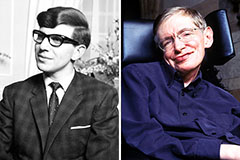In the heart of Ethiopian/Amharic/Eritrean culture lies a potent symbol: the equal-armed cross. This sacred/ancient/holy emblem, deeply rooted/ingrained/embedded in the beliefs/traditions/history of the Ethiopian people, stands as a testament to their unwavering faith and spirituality/commitment/devotion. Its simple yet powerful/meaningful/striking design embodies the principles/values/ideals of unity, equality/balance/harmony, and hope/love/peace. The equal-armed cross is not merely a religious symbol; it represents/symbolizes/embodies the very essence/fabric/soul of Ethiopia.
From ancient temples/structures/monasteries to modern homes/buildings/artifacts, its presence permeates/infuses/touches every aspect of Ethiopian life. The cross serves as a constant reminder/inspiration/guidepost for the people, urging them to strive for unity/harmony/peace and to live in accordance/alignment/agreement with their faith. Its influence/impact/resonance extends far beyond religious boundaries, unifying/connecting/bridging individuals from diverse backgrounds under a shared belief/system/culture.
Thousands/Millions/Countless years of history and tradition have endowed the equal-armed cross with a rich/deep/layered meaning. It is a symbol that transcends/supersedes/overshadows time, reminding us of the enduring power of faith and the importance of unity in a world often divided/fractured/polarized.
Unveiling the Ancient Power of the Plus Sign in Ethiopia
Deep within the core of Ethiopia lies a mark of great strength: the plus sign. This unassuming symbol has been utilized by timeworn civilizations for centuries, containing a deep philosophical meaning.
Researchers believe the plus sign represents the joining of opposites: truth and dark, male and moon. Its presence in old Ethiopian treasures suggests a conviction that the plus sign could harmonize these powers, bringing well-being to people.
Even today, the plus sign remains as a potent symbol in Ethiopian society. It is displayed on items from ornaments to structures, serving as a testament of the knowledge passed down through generations.
The Soul of Stone: Exploring Ethiopia's Pre-Christian Architecture
In the heart of Ancient Ethiopia, where heat kissed ancient stones, rose structures that held more than just stone. These pre-Christian Ethiopian buildings, encompassing millennia, are not merely structures of the past. They are windows into a world where the concrete and spiritual intertwined, where every curve spoke of faith and belief.
Skilled architects, imbued with deep insight of astronomy, cosmology, and ritual, built these monumental structures. They utilized local materials, molding them into shapes that communicated with the cosmos.
These architectural manifestations, often incorporating symbolic designs, served as platforms for rituals, uniting the physical realm with the sacred.
The vestiges of these ancient structures, enduring as testament to a lost era, continue to captivate us today. They are a powerful reminder that even in the absence of empires and civilizations, the echoes of their beliefs and hopes can endure for centuries to come.
The Greek Cross Embraced
From ancient sacred sites to vibrant temples, a pilgrimage through Ethiopian sacred spaces unveils a captivating narrative. The prominent Greek cross, a symbol of faith and history, adorns countless structures, each whispering legends of centuries past. As we venture deeper into this spiritual territory, we encounter not just architectural marvels but also the vibrant lives of a people deeply rooted in their beliefs.
Through these sacred walls, time seems to linger. Each ancient inscription and intricate carving speaks volumes about the enduring beliefs that have shaped Ethiopian culture for generations.
Unveiling the Mysteries of the Cross in Ethiopian Art
In the heart of the Horn of Africa, where ancient wisdom and vibrant faith intertwine, lies a tale woven with sacred geometry. The cross, far from being a mere symbol of faith, stands as a profound representation of cosmic order within Ethiopian tradition.
Through complex designs carved into stone, painted onto walls, and meticulously embroidered into textiles, the cross echoes the rhythm of creation itself. Each line, each curve, holds meaning, whispering secrets of balance, harmony, and the divine essence.
From the iconic obelisk standing tall in Lalibela, to the intricate gold filigree adorning sacred relics, the cross transcends its physical form. It becomes a bridge connecting the earthly realm with the celestial, a tangible expression of Ethiopia's rich spiritual heritage.
The story of the cross in Ethiopian tradition is one of continuity and transformation. It speaks of an ancient wisdom passed down through generations, preserved in art, architecture, and every aspect of daily life.
Symbols in Faith: The Equal-Armed Cross and its Significance in Ethiopia
The equal-armed cross, also known as the emblem of St. George, holds a special role in Ethiopian Christianity. Emerging from ancient Coptic traditions, this cross represents the unity of Christ's humanity and divinity. Illustrated with its arms of equal length, it represents God's perfect balance and love for all humankind.
Within Ethiopian Orthodox churches, the cross is a important feature, adorning walls, altars, and sacred objects. It is also a frequent sign worn as jewelry by a number of Ethiopian Christians, serving as a reminder of their website faith and relationship to Christ.
Furthermore, the equal-armed cross holds traditional value in Ethiopia. It is often associated with national identity, strength, and defense. Its presence in Ethiopian society highlights the profound impact of Christianity on the country's culture, history, and everyday life.
 Alexa Vega Then & Now!
Alexa Vega Then & Now! Talia Balsam Then & Now!
Talia Balsam Then & Now! Soleil Moon Frye Then & Now!
Soleil Moon Frye Then & Now! Stephen Hawking Then & Now!
Stephen Hawking Then & Now! Nicholle Tom Then & Now!
Nicholle Tom Then & Now!